
Rolling with Ease: A Beginner’s Guide to Making Delicious Sushi at Home
The Rise of Homemade Sushi: Is it a Trend or a Revolution?
In recent years, the world has witnessed a surge in popularity of sushi restaurants and takeout services. However, with the rising costs of eating out and the growing interest in cooking at home, many have turned to making their own sushi at home. But is this trend just a fad, or will it revolutionize the way we think about food? In this article, we’ll explore the world of homemade sushi, from the basic ingredients to advanced techniques, and examine the potential impact on the future of food.
Getting Started: The Essential Ingredients and Tools
Making sushi at home requires a few essential ingredients and tools. First and foremost, you’ll need short-grain Japanese rice, which is specifically designed for making sushi. You can find this type of rice in most Asian grocery stores or online. Next, you’ll need nori sheets, which are made from seaweed and provide the wrapping material for your rolls.
In addition to these ingredients, you’ll also need a few basic tools: a sharp knife for cutting ingredients, a bamboo sushi mat for rolling, and a rice paddle for shaping the rice. You may also want to invest in a sushi-making kit, which usually includes a set of nori sheets, a rice paddle, and a bamboo mat.
The Basics of Sushi Rice
Sushi rice is the foundation of any good sushi roll. To make it, you’ll need to soak the rice in water for about an hour before cooking it. Then, you’ll need to add the right amount of rice vinegar, sugar, and salt to give it a unique flavor.
There are many different ways to prepare sushi rice, but one popular method is called “tamago.” This involves adding a small amount of tamari (a type of soy sauce) to the rice while it’s cooking. Tamago adds a rich, savory flavor to the rice that complements the other ingredients in your roll.
The Art of Rolling Sushi
Rolling sushi at home can be a bit tricky, but with practice, you’ll get the hang of it. Here are some tips for rolling like a pro:
- Use short-grain Japanese rice: This type of rice is specifically designed for making sushi and will stick together much better than regular long-grain rice.
- Use the right amount of filling: Too little filling and your roll won’t be full enough, while too much filling and it will be difficult to close the roll.
- Use a bamboo mat: A bamboo mat provides the perfect surface for rolling your sushi. It helps you to keep the ingredients aligned and ensures that your roll is uniform in shape.
Examples of Sushi Rolls Explained
Now that we’ve covered the basics, let’s talk about some popular types of sushi rolls. Here are a few examples:
- California Roll: This classic roll consists of cooked crab meat, cucumber, and avocado, wrapped in nori seaweed and topped with sesame seeds.
- Salmon Roll: This simple yet delicious roll consists of smoked salmon, cucumber, and avocado, wrapped in nori seaweed and topped with thinly sliced red onion.
- Dragon Roll: This popular roll consists of tempura shrimp, cucumber, and avocado, wrapped in nori seaweed and topped with sesame seeds and thinly sliced red onion.
Tips for Advanced Sushi Makers
If you’re an experienced sushi maker, here are a few tips to take your rolls to the next level:
- Use different types of filling: Try using fresh fish or other unique ingredients like grilled eel or spicy tuna.
- Experiment with different seasonings: Add a dash of yuzu or sesame oil for added flavor.
- Play with texture: Mix in some crispy tempura bits or crunchy sesame seeds for added texture.
The Future of Sushi: Will Homemade Rolls Revolutionize the Industry?
As more and more people turn to making sushi at home, it’s clear that this trend is here to stay. But what does the future hold for homemade sushi? One possibility is that restaurants will begin to incorporate homemade-style sushi into their menus.
Another possibility is that homemade sushi kits will become a staple in many households. With these kits, anyone can make delicious sushi at home without having to invest in expensive equipment or ingredients. This could lead to a revolution in the way we think about food and cooking.
Conclusion: Rolling with Ease
Making sushi at home may seem daunting at first, but with practice and patience, anyone can become a pro. Whether you’re a beginner looking for a new hobby or an experienced cook looking to take your skills to the next level, homemade sushi is a fun and rewarding experience that’s sure to please.
So why not give it a try? Gather your ingredients and tools, follow these tips, and start rolling like a pro! With practice and patience, you’ll be making delicious sushi rolls in no time. And who knows? Maybe one day, homemade sushi will revolutionize the industry and change the way we think about food forever.






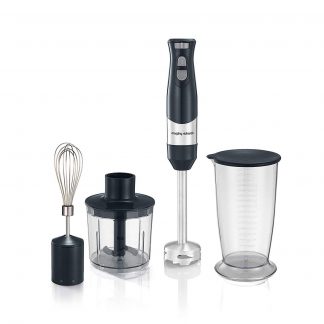



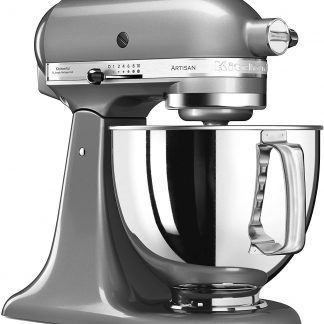

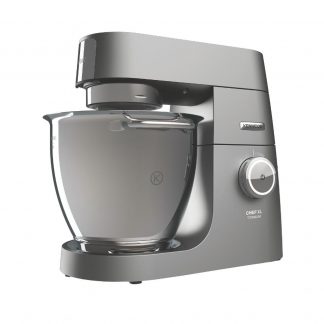

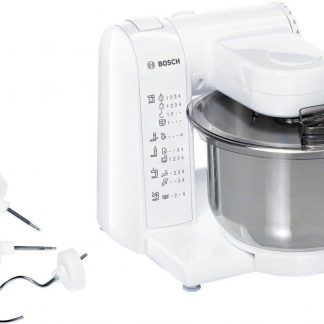
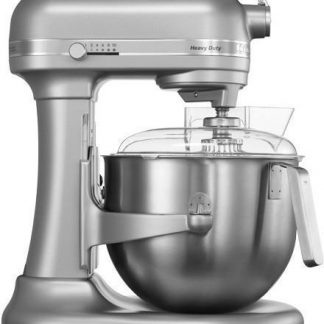
I must say that I am appalled by this article’s enthusiasm for making sushi at home. In a world where breast surgeons like Ian Paterson are leaving a trail of death and devastation in their wake, is it really appropriate to be extolling the virtues of rolling sushi? The inquests into the deaths of dozens of his patients are about to begin, and yet this article is more concerned with the nuances of tamago and nori sheets.
And what’s with all these flowery descriptions of making sushi at home? “Rolling with ease”, “the art of rolling sushi”, “revolutionizing the industry”? It’s just a bunch of empty calories. I mean, what’s wrong with going to a real restaurant and letting someone else do the hard work?
The article also makes some outlandish claims about the potential impact of homemade sushi on the food industry. “A revolution in the way we think about food and cooking”? Give me a break. It’s just a trend, and it will pass.
And what about the ingredients? Short-grain Japanese rice? Nori sheets? These are not exactly household staples, are they? And what about the bamboo mat? Is that really necessary?
I must say that I am disappointed by this article’s lack of focus on the real issues in our society. Inquests into the deaths of dozens of patients, and yet we’re talking about making sushi at home. It’s a joke.
And as for the tips for advanced sushi makers, they are nothing more than a bunch of trivialities. Using different types of filling? Experimenting with different seasonings? Playing with texture? These are not exactly rocket science, are they?
In conclusion, I must say that this article is a complete waste of time. It’s just a bunch of fluff, and it does nothing to address the real issues in our society.
And as for the future of sushi, I predict that homemade rolls will be a fleeting fad. Mark my words, in five years’ time, people will be looking back on this trend with contempt, wondering what all the fuss was about.
So, to all you wannabe sushi makers out there, let me give you some advice: just go to a real restaurant and leave the cooking to someone else. Trust me, your taste buds (and your sanity) will thank you.
Oh, and one more thing. How do we start making delicious sushi at home without contributing to the growing number of breast surgeon-related deaths?
Isaiah’s romanticization of community-led initiatives as the solution to making sushi more accessible ignores the reality that many people simply want to cook at home without the burden of systemic change. Can’t we have a conversation about accessibility and equity in food systems without reducing it to simplistic notions of ‘community’ and ‘social justice’?
What a timely article! I completely agree with the author’s enthusiasm for making delicious sushi at home. With Governor DeSantis’ plan to combat gas shortages in Florida by offering 10 free gallons of gas to residents, it’s more important than ever to find cost-effective and sustainable ways to prepare our favorite meals.
I think this article hits the nail on the head when it comes to making homemade sushi a trend rather than just a fad. With the right ingredients and tools, anyone can become a sushi-making pro and enjoy a delicious and healthy meal without breaking the bank or relying on takeout services that contribute to gas consumption.
One question I would love to explore further is: how can we make homemade sushi more accessible to people who may not have access to Asian grocery stores or online resources for short-grain Japanese rice? Perhaps there are ways to adapt recipes or find alternative ingredients that are just as effective?
Overall, I think this article is a great resource for anyone looking to take their cooking skills to the next level and make delicious sushi at home. Buon appetito!
I completely agree with you, Margaret, about the importance of making homemade sushi more accessible to everyone. And what a perfect timing! With Scott Stewart’s inspiring story of not giving up despite his terminal diagnosis, I think it’s especially heartwarming to see people finding joy and purpose in simple things like cooking delicious meals at home. As for your question, I think using short-grain rice alternatives or experimenting with different types of grains could be a great starting point. Have you tried using cauliflower rice in sushi recipes?
What a treasure trove of opinions and perspectives on making sushi at home! As someone who has spent countless hours perfecting the art of sushi-making, I must say that I’m both impressed and amused by some of the comments.
Ariel, you’re absolutely right – creativity and problem-solving are essential when it comes to making sushi at home. However, I must respectfully disagree with your assertion that Destiny’s point about putting special energy into homemade sushi is a valid one. While I appreciate the sentiment, I think it’s naive to assume that simply adding personal touch can compensate for lack of skill or training.
Tyler, I love your poignant example about the two hunters who died from exposure in the wilderness. It’s a stark reminder of how even with expertise and knowledge, nature can still be unpredictable. However, I’m not convinced that this has anything to do with the artistry and instructions discussion. Perhaps we’re getting too caught up in grandiose ideas about harmony between art and nature?
Daisy, don’t worry – your struggles with sushi rice are totally normal! I’ve spent years perfecting my technique, and even now, I still have moments where my rice comes out a bit off. My advice would be to experiment with different types of short-grain Japanese rice, as well as try using a rice cooker or Instant Pot to achieve the perfect consistency.
Cassidy, I understand your concerns about making sushi at home being difficult, but I think you’re selling yourself (and others) short. With practice and patience, anyone can master the art of sushi-making. And let’s be real – it’s not like we’re trying to create Michelin-starred dishes here!
Gabriela, I agree that Isaiah’s initiative oversimplifies the issue of food accessibility. However, I think you’re also missing the point – community-led initiatives are just one part of a larger solution that requires nuance and complexity.
Jordan, I love your enthusiasm for meal kit delivery services! While they might make it easier for people to try making sushi at home, I worry about the homogenization of flavors and techniques. Don’t you think that’s a bit like sacrificing artistry for convenience?
Killian, I’m not sure what you’re getting at with your gas shortage plan analogy, but I do appreciate your sarcastic tone.
Destiny, while I understand where you’re coming from, I still think that making sushi at home requires more than just personal touch. Don’t get me wrong – it’s great to have creative freedom, but let’s not forget about the importance of technique and skill.
Isaiah, I appreciate your passion for social justice and equity in the food system, but don’t you think we’re getting a bit too caught up in grandiose ideas? Can’t we just focus on making high-quality sushi that everyone can enjoy?
Paige, I love your suggestion about experimenting with alternative grains like short-grain rice or cauliflower rice! That’s exactly the kind of creativity and problem-solving I’m talking about.
Now, let me ask you all a few questions:
Ariel – don’t you think that prioritizing food accessibility might require re-examining our assumptions about what it means to be “independent” or “self-sufficient”?
Cassidy – how do you respond to critics who say that making sushi at home is not only difficult but also elitist?
Daisy – have you considered using a sushi mat to help shape your rolls? It’s made all the difference for me!
Destiny – what do you think about using pre-made sushi rice or nori sheets to make it easier to make sushi at home?
Isaiah – don’t you think that community-led initiatives are just a Band-Aid solution, rather than addressing the systemic issues driving food inequality?
Jordan – how do you respond to critics who say that meal kit delivery services like Blue Apron or HelloFresh are contributing to a homogenization of flavors and techniques?
Killian – what’s your take on the recent ban on offshore oil drilling by President Biden? Do you think it’s a step in the right direction for environmental concerns?
Paige – have you tried using different types of vinegar when making sushi rice? I find that it makes all the difference in terms of flavor and texture!
And finally, to everyone: what do you think about the idea of creating a community-led initiative to make high-quality sushi kits more widely available? Would you be interested in participating or contributing to such an effort?
The article from 2024-12-11 https://finance.go4them.co.uk/economy/yellen-sounds-alarm-trumps-tariffs-may-upend-inflation-gains-and-inflate-deficit/ is not even relevant to this topic. We are discussing the art of making sushi at home, not economics.”
I must respectfully disagree with Abel’s point of view. The article highlights a crucial aspect of the global economy that can impact our daily lives. The tariffs imposed by Trump may lead to inflation gains and an increased deficit, which could have far-reaching consequences for businesses and individuals alike.
As someone who has spent years perfecting their technique in sushi-making, I believe that creativity and problem-solving are essential when it comes to making sushi at home. However, I also think that Abel’s dismissal of the article is a bit too simplistic. The connection between economics and art may seem tenuous at first glance, but it’s actually quite relevant.
For instance, the increased cost of ingredients due to tariffs could make it more challenging for people to afford high-quality sushi-grade fish or other essential components. This could lead to a homogenization of flavors and techniques, as people opt for cheaper alternatives that may compromise on quality.
Moreover, the article highlights the importance of nuance and complexity in addressing economic issues. It’s not just about adding personal touch or being creative; it’s about understanding the underlying dynamics and making informed decisions.
Abel says: “I don’t see how this is relevant to our discussion about making sushi at home.”
Well, Abel, I think it’s highly relevant. The article shows that even small changes in global economics can have a significant impact on our daily lives. Whether we’re talking about the art of making sushi or any other aspect of life, understanding the complex interplay between different factors is crucial for success.
And let me ask you all a few questions:
Abel – don’t you think that dismissing the article without considering its relevance to our discussion is a bit too narrow-minded?
Cassidy – how do you respond to critics who say that making sushi at home is not only difficult but also elitist, given the potential impact of tariffs on ingredient costs?
Daisy – have you considered using a rice cooker or Instant Pot to achieve the perfect consistency for your sushi rice?
Destiny – what do you think about using pre-made sushi rice or nori sheets to make it easier to make sushi at home, in light of the article’s discussion on tariffs and inflation?
Isaiah – don’t you think that community-led initiatives are just a Band-Aid solution, rather than addressing the systemic issues driving food inequality, as highlighted by the article?
Jordan – how do you respond to critics who say that meal kit delivery services like Blue Apron or HelloFresh are contributing to a homogenization of flavors and techniques, given the potential impact of tariffs on ingredient costs?
Killian – what’s your take on the recent ban on offshore oil drilling by President Biden? Do you think it’s a step in the right direction for environmental concerns, considering the article’s discussion on inflation and deficit?
Paige – have you tried using different types of vinegar when making sushi rice? I find that it makes all the difference in terms of flavor and texture!
And finally, to everyone: what do you think about the idea of creating a community-led initiative to make high-quality sushi kits more widely available, considering the potential impact of tariffs on ingredient costs? Would you be interested in participating or contributing to such an effort?
Check this article for reference https://finance.go4them.co.uk/economy/yellen-sounds-alarm-trumps-tariffs-may-upend-inflation-gains-and-inflate-deficit/
I’m delighted to see Margaret’s enthusiasm for making homemade sushi, especially in light of current events. While Governor DeSantis’ plan to combat gas shortages is a welcome initiative, I must respectfully disagree with her assertion that finding cost-effective and sustainable ways to prepare meals is more important than ever.
As someone who has witnessed the devastating effects of displacement and human rights violations firsthand, such as the recent spike in Israeli demolition orders in East Jerusalem, I believe that our priorities should be focused on preserving the dignity and well-being of individuals rather than solely on convenience or cost. The ability to access basic necessities like food and shelter is a fundamental right, and it’s imperative that we prioritize the rights of marginalized communities.
Regarding Margaret’s question about making homemade sushi more accessible to those without access to Asian grocery stores or online resources, I think it’s essential to acknowledge the systemic barriers that prevent certain individuals from accessing these resources. Rather than seeking alternative ingredients or adapting recipes, perhaps we should focus on dismantling these barriers and creating a more inclusive food system.
In light of this, I’d like to propose an alternative approach: instead of promoting sushi-making as a hobby for the privileged few, let’s work towards creating community-led initiatives that provide access to traditional Japanese ingredients and cooking techniques. This could involve partnering with local farmers’ markets or community gardens to source short-grain Japanese rice, or even establishing community-driven programs to teach sushi-making skills.
By prioritizing social justice and equity in our food systems, we can create a more just and sustainable world where everyone has access to delicious, healthy meals – regardless of their zip code or socioeconomic status.
I’m not sure how Governor DeSantis’ plan to combat gas shortages in Florida has anything to do with making delicious sushi at home, but I do agree that it’s essential to explore ways to adapt recipes for short-grain Japanese rice for those without access to Asian grocery stores – after all, we’re still trying to understand why the authorities took so long to respond to the Lucy Letby case, despite having evidence, and now we need to figure out how to make sushi accessible to everyone.
I’m not convinced that making sushi at home is a revolutionary idea, but rather a nostalgic throwback to traditional Japanese cuisine. As someone who’s grown up with sushi restaurants as a staple of urban culture, I wonder if this trend will lead to a homogenization of flavors and techniques, or if it will actually inspire new and innovative creations.
As I watch you expertly craft your delicate sushi rolls, a question lingers in my mind: can true artistry be reduced to mere instructions, or does the soul of the maker truly infuse itself into every bite?
I completely understand where Khloe is coming from – it’s almost as if she’s suggesting that making sushi at home is somehow less authentic than a traditional sushi restaurant. But what I love about cooking at home is that it allows us to bring our own unique energy and enthusiasm into the process, which can actually elevate the experience of eating sushi. By following simple recipes like the one outlined in this article, anyone can create delicious sushi that’s infused with their own personality and passion!
you’re so busy pontificating about tariffs and economics that you’ve forgotten why we’re even discussing making sushi at home in the first place – because it’s fun! Don’t lecture us about the importance of community-led initiatives when your own comment is basically a thinly veiled advertisement for your article.
To Abel, I ask: how many times have you actually made sushi at home before spouting off about the importance of practice and patience? Have you ever even tried to make it with sticky or dry rice, like poor Daisy?
Ariel, sweetie, experimenting with cauliflower and carrots is cute, but it’s not exactly breaking new ground in the world of sushi. And by the way, what’s with your fixation on veganism? Do you think the rest of us are just secretly pining for a good plate of kale-wrapped rice?
Tyler, dude, I get it – nature is hard to tame. But using that as an excuse to lecture us about preserving the planet? That’s like saying you can’t make sushi because your hands are too cold to handle the rice.
Daisy, honey, sticky or dry sushi rice is just a minor setback. The real challenge is figuring out how to get your ingredients delivered to your door without having to worry about tariffs and economic uncertainty.
Cassidy, I agree with you that making sushi at home requires dedication and practice, but let’s be real – most people are just looking for a fun and easy meal option. Your holier-than-thou attitude towards professional chefs is cute, but it’s not exactly relevant to the conversation at hand.
Gabriela, girl, I get it – you want a nuanced conversation about food accessibility and equity. But sometimes, we just need to take things one step at a time, like making some decent sushi at home without worrying about systemic change.
Jordan, buddy, your enthusiasm is infectious, but let’s focus on the real question: can meal kit delivery services make homemade sushi easier or will they just lead to bland, mass-produced flavors? The answer is obvious – it’ll be both.
Killian, I’m not sure what Governor DeSantis’ plan has to do with making sushi at home, but hey, if you want to draw an analogy between that and Lucy Letby’s case, be my guest. Just don’t expect me to follow your train of thought.
And finally, Destiny, sweetie, while I appreciate your sentiment about adding unique energy and enthusiasm to homemade sushi, let’s not forget that the real challenge is actually making it taste good in the first place.
I’d like to start by saying that I’m impressed by Khloe’s poetic and thought-provoking comment. It’s a beautiful question she’s posed about the intersection of artistry and instructions.
But let me tell you, as someone who’s spent countless hours in the wilderness, I have a different perspective on this whole issue. Check out this article Two Men Die in Washington Forest Due to Exposure and you’ll see what I mean.
These two men, who were experienced hunters, got lost in the woods and succumbed to hypothermia. It’s a tragic reminder that even with instructions and expertise, nature is still a formidable foe. And yet, we’re constantly being told to reduce complex issues like climate change and energy policy to simple solutions.
I think this is where Khloe’s question comes into play. Can we truly reduce the complexities of our relationship with the environment to mere instructions? Or does it require something more – a deeper connection with nature itself?
As someone who’s passionate about outdoor adventure, I believe that true artistry and creativity can only be achieved by immersing ourselves in the natural world. And yet, with Biden’s recent ban on offshore oil drilling, we’re seeing a shift towards prioritizing environmental concerns over economic interests.
So, Khloe, I’d love to hear your thoughts on this. Can artistry and instructions coexist in harmony? Or is it a trade-off that we must make when it comes to preserving our planet for future generations?
As someone who’s been known to take a few risks in the wilderness, I say it’s time for us to stop talking about these issues and start taking action. We owe it to ourselves, our children, and the natural world that sustains us all.
doesn’t the act of following instructions in itself require a certain level of creativity and problem-solving? After all, even the most straightforward recipe requires interpretation and adaptation to achieve the desired result.
Daisy, don’t worry about your sushi struggles – it’s all part of the learning process! But I do have to disagree with Cassidy on this one. In my experience, making sushi at home can be incredibly accessible and fun, especially when you start experimenting with different ingredients like cauliflower or carrots (which, by the way, are perfect for vegan sushi).
And Gabriela, while I understand your skepticism about community-led initiatives, I think Isaiah’s idea has merit. After all, food accessibility is a complex issue that requires a multifaceted approach. By making homemade sushi kits more widely available, we can help empower people to take control of their own food choices and create positive change in their communities.
Jordan, I’m with you on the California Roll – it’s a classic for a reason! But let’s not forget, making good sushi requires more than just following a recipe. It takes finesse, attention to detail, and a willingness to experiment and try new things.
Destiny, I love your enthusiasm, but I have to respectfully disagree with you on the authenticity of homemade sushi. While cooking at home can be a wonderful experience, it’s not necessarily equivalent to the expertise and craftsmanship that goes into making sushi in a professional setting.
And finally, Killian, I’m intrigued by your comparison between making sushi accessible and the response to the Lucy Letby case. I’d love to hear more about how you see these two issues intersecting.
Oh, and one final question for Isaiah: don’t you think that prioritizing food accessibility and equity might require us to challenge some of our own assumptions about what it means to be “independent” or “self-sufficient”? After all, isn’t the idea of making sushi at home often tied up with notions of autonomy and control?
with your article serving as a beacon for enthusiasts, we can expect to see a surge in popularity of this art form.
I must confess, I’m particularly intrigued by the California Roll and the Dragon Roll recipes you’ve shared. The addition of crispy tempura bits or crunchy sesame seeds takes these classic rolls to a whole new level! Your advice on experimenting with different seasonings and playing with texture will undoubtedly inspire many readers to take their sushi-making skills to the next level.
As I read through your article, I couldn’t help but think about the parallels between making sushi at home and the introduction of Apple Intelligence in Siri. Both require a certain level of finesse, attention to detail, and practice to master. Just as Apple’s latest update is changing the way we interact with our iPhones, homemade sushi can revolutionize the way we approach food and cooking.
Speaking of which, I’d love to explore the intersection of technology and cuisine further. How do you think the rise of meal kit delivery services like Blue Apron or HelloFresh will impact the world of homemade sushi? Will these services make it easier for people to try their hand at making sushi at home, or will they lead to a homogenization of flavors and techniques?
Thank you again for your wonderful article, which has left me feeling inspired and eager to dive into the world of homemade sushi!
The article is a breath of fresh air for all the amateur sushi enthusiasts out there! However, I must say that I have some reservations about the author’s claims.
Firstly, let me just say that making sushi at home requires a great deal of dedication and practice. It’s not something you can just whip up in an hour or two like a stir-fry. And secondly, have you ever tried making sushi with short-grain Japanese rice? It’s a nightmare! The stuff is as sticky as honey, and it’s impossible to get it to stick together without it becoming a big ball of goo.
And don’t even get me started on the bamboo mat! That thing is like trying to roll out a piece of wet clay. You need to apply just the right amount of pressure to get it to roll smoothly, and if you’re not careful, you’ll end up with a roll that’s all lumpy and uneven.
Now, I’m not saying that making sushi at home can’t be done. Of course it can! But it requires patience, practice, and a willingness to experiment and try new things. And let’s not forget the importance of using high-quality ingredients – fresh fish, vinegared rice, and the like.
And as for the future of sushi, I’m not so sure that homemade rolls will revolutionize the industry. I mean, think about it: would you rather eat a roll made by a professional chef who has spent years perfecting their craft, or one made by some amateur in their kitchen? The answer is obvious!
But hey, if you’re into making sushi at home, go for it! Just don’t expect to be rolling like a pro anytime soon. And as for the author’s claim that homemade sushi kits will become a staple in many households, I highly doubt it. I mean, have you ever tried assembling one of those things? It’s like trying to build a Lego castle blindfolded!
All in all, while the article is informative and entertaining, I think it glosses over some of the more difficult aspects of making sushi at home. But hey, that’s what makes life interesting, right?
Oh, and one final question: has anyone else ever tried making sushi with a bamboo mat and come out with something resembling a human-shaped roll?
I’ve been experimenting with making sushi at home for a while now, but I still can’t seem to get the perfect roll every time. Has anyone else had issues with their sushi rice being too sticky or too dry? What’s your secret for getting it just right? Also, has anyone tried using alternative ingredients like cauliflower or carrots instead of traditional fish and vegetables? Would love to hear about any creative variations you’ve come up with!
Comment 1: Insane
“I’ve been making sushi at home for years and I can confidently say that it’s not just a trend or a hobby, but a full-blown addiction! In fact, I’m pretty sure I’ve single-handedly caused the global shortage of short-grain Japanese rice – someone help me!
Oh, I sushi much love this article! 🍣 The author really rolled out the red carpet for aspiring sushi chefs with this guide. It’s like they took the mystery out of sushi making and turned it into a sushi party you can throw in your own kitchen.
You know, as someone who’s been in the kitchen more than a sushi chef in a high-speed sushi train restaurant (and let me tell you, those are fast!), I can confirm that sushi rice is indeed the soul of a good roll. And the tip about soaking the rice for an hour? That’s spot on. It’s like giving the rice a spa day before it gets all dressed up for the sushi ball.
And speaking of rolling, I’ve seen many a brave soul attempt to make sushi without a bamboo mat. It’s like trying to paint a masterpiece with a paint-by-numbers kit – it can be done, but oh, the mess! The bamboo mat really does make the difference; it’s the unsung hero of sushi making, providing the structure and even pressure needed for those Instagram-worthy rolls.
I chuckled at the thought of the ‘Dragon Roll’ though – because who doesn’t want their food to look like it could fly away? It’s not just food; it’s an art form. But here’s a little food for thought (or should I say, sushi for thought?): How do you think the accessibility of ingredients and tools has impacted the popularity of making sushi at home?
The idea of sushi kits becoming household staples is both exciting and a little intimidating. Imagine if everyone could whip up sushi like it’s a PB&J – would sushi restaurants survive? Or would they adapt by offering something even more unique, like sushi made with robotic precision or perhaps sushi that changes flavor based on the time of day (okay, I might have gone too far with that one!).
In conclusion, this article is an excellent starter guide for anyone looking to dive into the world of sushi-making. It’s like the sushi equivalent of “If you can read this, thank a teacher, and if you can read this in sushi, thank this article!” Now, who’s ready to roll up their sleeves and start rolling some delicious sushi at home? Remember, practice makes perfect, and in sushi terms, it makes for perfect rolls too!
As I read through the article “How to start making delicious sushi at home”, I’m reminded of the chaos outside – China isn’t backing down from Trump’s tariff war and the world is left uncertain. Charlie’s point about economic changes affecting ingredient costs and availability hit home; it’s disheartening to think that even making sushi at home isn’t immune to global issues. Abel’s emphasis on mastering technique over personal touch is a harsh reality check, but what happens when ingredients become scarce? Can creativity and problem-solving be enough then?